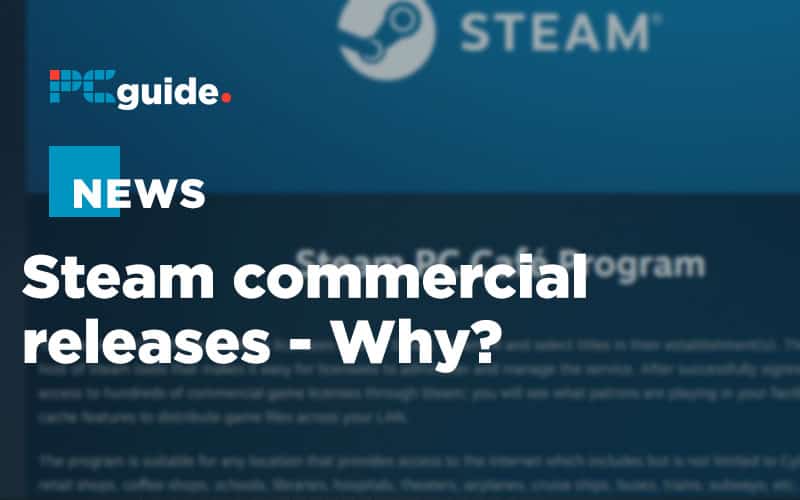
You may have read our post here looking at the trend of games releasing on Steam only as commercial licenses, rather than being available for standard consumer licenses too. We have reached out to several of the developers of games releasing under those terms, to find out how exactly this came about, and why they went in this direction. Read on to find out what exactly is going on.
Predator VR
First I reached out to Phosphor Games, the developer behind Predator VR, based on the film series of the same name. I spoke to their CEO Justin Corcoran. He was able to give some insight to things from his perspective, but sadly it’s only a small part of the story.
He told me the following:
We made Predator VR with Fox Next studios, that has since closed after the Disney merger, with control of the game moving over to Disney. Disney made the decision to go LBE [Location-based entertainment] only. The game can be played on Vive, Quest, or PSVR.
Looks like some of the peculiarities about how this release has been planned might have something to do with the complicating factors involved with a massive corporate merger like that between Disney and Fox. A lot of things can fall between the cracks when such mergers occur, and sometimes plans get changed out of necessity rather than a grand plan. Even with people invested in this game working at Disney, there are lots of factors that might impact its release. Justin was kind enough to connect me with the person who had been assigned responsibility for this game at Disney to the best of his knowledge, but it would appear that this person is actually no longer with Disney, so maybe Disney has bigger priorities than this game at the moment.
Will be curious to see how things play out between now and it’s currently planned February 2021 release date.
Vrerience
Next, I reached out to Malintis, a Dutch Psychotherapy organisation, who are using VR not for entertainment, but for therapeutic purposes.
I spoke with Rick Evenhuis, a Psychologist behind their application Vrerience, who was kind enough to explain how they landed on the decision to release on Steam under a commercial only application.
He told me the following:
We published Vrerience under a commercial license because it’s intended for professional use. It’s a Virtual Reality Therapy (VRT) library that isn’t intended for regular customers in order to treat themselves (which would also be difficult since each program requires a second person outside VR to control what happens inside the simulation). A commercial license gets this point across, and it’s a more sensible way to sell our products since it’s meant for therapists to make a living using Vrerience in their therapies. This is also why we don’t have plans to release Vrerience under a standard Steam consumer license. We believe that VRT is a very delicate and serious therapeutic (exposure) method, and wouldn’t want it to fall into the wrong hands.
You can think of Vrerience as a “Netflix” for professional therapists. However, because a therapist won’t always need all of the programs Vrerience has to offer, we made Vrerience itself free and each individual simulation requires a small monthly fee. Each month you can choose which subscription to end or to extend. This allows a therapist to decide their own total monthly fee, based on their current, specific group of clients.
Our main goal is to make VRT much more accessible to independent therapists than it usually is. With most VRT developers, you buy a complete library for thousands of dollars. This isn’t affordable for many independent therapists, so VRT remained largely unused. With the Vrerience initiative, we want to change this. We also hope to make Vrerience a community-driven initiative. We listen to feedback and use it for frequent updates. We also invite interested programmers to build simulations for us (in exchange for royalties) and have psychologists evaluate and communicate whether or not it is suitable for therapeutic means.
I also asked if, given the recent global pandemic affecting countries around the world, they were concerned that health risks and the requirement that people attend specific locations and use shared hardware to access their application would affect usage. He said:
Indeed, we see a drop in sales, and also paused our own VRT practice for the time being. We simply can’t risk the health hazards by letting multiple clients use the same VR headset. Public health and safety comes first, so I hope that other therapists also take this into account, regardless of what this means for our sales. We’ll also notify our registered users to exercise caution using the headset for public use.
Fingers crossed things work out in the future, both for Malintis and for patients that were benefiting from this therapeutic service.
Proton Ball
Next up I spoke to Emmanuel Body Hinrichsen, from developer Exoception, who made the VR sports game Proton Ball, which released on Steam via a commercial only license back in February 2019. He told me:
For technical reasons, Proton Ball only works on LAN environments, and we didn’t have the funds to address that issue. As it’s a multiplayer game, licensing only to VR arcade rooms seemed to be the best option.
When asked how the commercial only licensing arrangement came about, he told me:
We asked Valve if arcade-only licensing was possible. They said yes, then applied this option on our game from their side.
This conversation perhaps came at a timely moment, since changes are on the horizon for Proton Ball, Emmanuel told me:
We’ve transferred the ownership of the game to a licencing company a few weeks ago, and it’s unlikely that the game stays on Steam.
He said that he couldn’t comment on whether the game will ever be made available under a standard Steam consumer license since it’s no longer up to him.
Kyber Knights
Finally, I spoke to Aleksi Kauppinen, CEO of developer Upward Games, who are currently developing the VR action game Kyber Knights. He told me the following:
Our own background is in the Arcade industry. We’ve operated our own venue Portaali here in Finland for three years and started the development with our own needs in mind. We soon realised that other Arcades have similar needs in terms of how to operate the game (especially multiplayer games) which are not met by most of the games built for consumers. The game only has LAN support as for now to enable automatic matchmaking and this wouldn’t work with the consumers very well. We initially released through our partners in the arcade scene (SpringboardVR, SynthesisVR and CtrlV) but quickly got inquiries from venues not using these platforms. Luckily we got the chance to release the commercial license through Steam to provide for these customers as well.
Our goal with the game was to make it as easy as possible for both the operator and the client. So you only need the standard equipment found in the majority of arcades with room-scale or standing only stations. It’s currently optimised for Vive. As for gameplay, we’re aiming for easy-to-learn-hard-to-master. The player will use the shield hand to teleport (as that’s currently the best way to move to prevent motion sickness) and the gun hand to shoot. So just touchpad on one hand and trigger on the other to make it super easy for first-timers.
Aleksi also told me that they are planning to release it under a consumer license, but it needs more work first.
The LAN only gameplay wouldn’t work on the consumer version very well. We’re hoping to update the game based on the feedback from the arcade scene. We are weeks away from releasing a major UI update and after that, we are going to add three new classes during the spring months bringing the total up to six. One big thing we want to add before the consumer release is online multiplayer. What we would like to do is build up the player base in the arcade market first as we see this as one of the main problems in most of the VR multiplayers. We are hoping to have the game available on all major VR platforms with the cross-platform player base if possible. We would still offer different versions for consumers and Arcades with the ability to play with each other but differences in the back end, settings and customisation. Right now our planned release is in December 2021, but we may adjust it based on our progress and the current events.
He also went on to tell me about how the COVID-19 pandemic has been impacting their business, not just for the game but also for their VR Arcade business
We are actually experiencing the impact on multiple ends as we’ve just closed our own venue temporarily due to the virus and we see it affecting our customers as well. We’re definitely monitoring the situation and are hoping for a quick V-shaped curve that would see a rapid temporary closing of venues and quick rise in the market after that. Unfortunately, the more pessimistic estimates show that the lockdowns might take a bit longer. If this is the case we might have to re-evaluate on where to focus based on the signs in both consumer and Arcade markets as well as our funding.
It’s a difficult time for many kinds of people right now. Hopefully Aleksi and his colleagues can find a path forward.
I did also reach back to the developer of ElevatorVR to hear about these subjects from their perspective but sadly did not get a response by time of publication. I’ll be sure to update this with their comments if I hear from them in future.
So as you can see, there are a variety of different factors resulting in games being released on Steam under a commercial only license, and the unique situations around each game have resulted in this outcome. It does very much seem like Valve’s goal is to be flexible around the needs of different games and are evaluating this on a case by case basis. Right now it is an extremely small portion of the titles available on Steam releasing under this model, and only in cases where there is a sensible reason for doing so.
